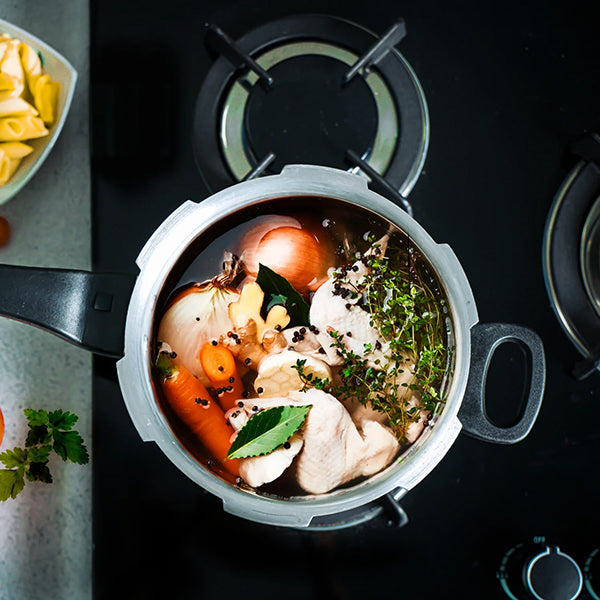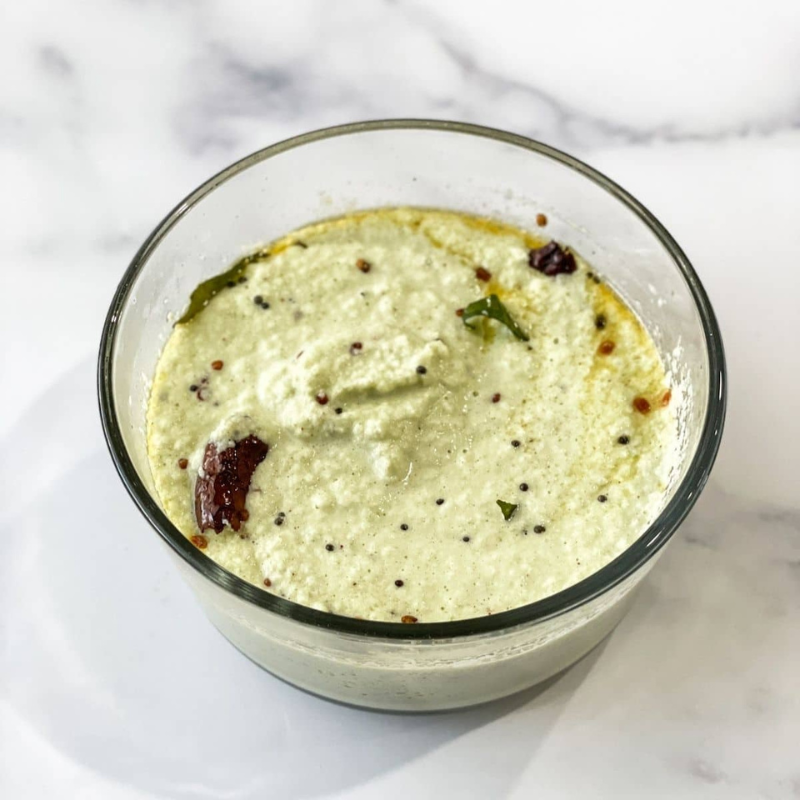Introduction
Definition of Gammon
Gammon refers to a cut of meat derived from the hind leg of a pig. It is typically cured or smoked, resulting in a versatile and flavourful ingredient that can be used in various dishes. The unique combination of rich flavours and tender texture make Gammon a favourite choice for many home cooks and food enthusiasts.
Advantages of Cooking Gammon in a Slow Cooker
When it comes to cooking gammon, utilizing a slow cooker offers several advantages. The slow and gentle cooking process allows the meat to become incredibly tender while retaining its natural juices. Unlike other cooking methods that require constant monitoring, a slow cooker provides convenience by requiring minimal hands-on attention. This makes it an ideal option for busy individuals or those who prefer hassle-free cooking experiences.
Preparing the Gammon
Selecting the Right Gammon Joint
To ensure a successful outcome, it is crucial to select the right gammon joint. Look for a joint with a generous amount of marbling, as this fat will melt during the cooking process, infusing the meat with flavour and preventing dryness. It is recommended to purchase a high-quality gammon joint from a reputable source to guarantee exceptional taste and texture.
Soaking the Gammon
Before cooking the gammon, it is essential to soak it to remove excess saltiness. Place the gammon joint in a large container and cover it with cold water. Allow it to soak for at least 12 hours, or preferably overnight, changing the water once or twice during the process. Soaking the gammon helps draw out any excess salt, ensuring a perfectly balanced flavour.
Seasoning and Flavouring
To elevate the gammon's taste profile, experiment with various seasonings and flavourings. Traditional choices include black peppercorns, bay leaves, cloves, and juniper berries. These aromatic ingredients will complement the natural flavours of the gammon, adding depth and complexity to the dish. You can either sprinkle the seasonings directly onto the gammon or create a flavourful rub by grinding them together with a mortar and pestle. Allow the gammon to marinate with the seasonings for at least an hour before cooking to enhance the flavour infusion.
Cooking the Gammon in a Slow Cooker
Setting Up the Slow Cooker:
Before embarking on the cooking process, ensure that you have a suitable-sized slow cooker for the gammon joint. It should be large enough to accommodate the joint comfortably without overcrowding. This will allow for even cooking and the absorption of flavours throughout the meat.
Cooking Times and Temperatures:
Cooking gammon in a slow cooker requires a low and slow approach to achieve optimal results. Set the slow cooker to the low heat setting to ensure the gammon becomes tender and juicy. The cooking time will vary depending on the size of the gammon joint.
As a general guideline, for a medium-sized joint, allow approximately 6-8 hours of cooking time. However, it is important to note that each slow cooker may vary in terms of efficiency and heat distribution, so it is recommended to refer to the manufacturer's guidelines and adjust the cooking time accordingly.
Monitoring the Cooking Process:
Throughout the cooking process, it is important to monitor the gammon to prevent overcooking or drying out. Slow cookers have different heat settings and efficiencies, so keeping a close eye on the progress is crucial. You may occasionally baste the gammon with the cooking juices to maintain moisture and enhance the flavour. Additionally, use a meat thermometer to check the internal temperature of the gammon. The desired temperature for fully cooked gammon should reach around 71°C.
Enhancing the Flavour
Using Aromatics and Herbs:
To further enhance the flavour profile of the gammon, consider incorporating aromatics and herbs into the cooking process. Garlic cloves, thyme, rosemary, and bay leaves are excellent choices. These ingredients impart delightful aromas and subtle flavours that complement the natural sweetness of the gammon, resulting in a well-rounded and aromatic dish.
Incorporating Spices and Sauces:
Spices and sauces can add depth and complexity to the gammon, elevating its taste to new heights. Consider incorporating a touch of ground cinnamon, allspice, or mustard powder to provide a subtle warmth and richness. Additionally, creating a glaze from ingredients such as honey, brown sugar, mustard, or pineapple juice can add a delightful caramelized crust and a burst of flavour to the gammon. Apply the glaze during the final stages of cooking to allow it to develop a beautiful glossy finish.
What To Have On The Side?
Slow-cooked gammon is a flavourful and hearty dish that pairs well with a wide variety of sides. Here are some delicious options to consider:
1. Mashed Potatoes: Creamy mashed potatoes are a classic choice. They complement the savoury and slightly salty flavour of the gammon.
2. Roasted Vegetables: Roast some seasonal vegetables like carrots, parsnips, and brussels sprouts with a drizzle of olive oil, salt, and pepper. The caramelized flavours of roasted veggies pair wonderfully with gammon.
3. Green Beans: Steamed or blanched green beans make for a simple and healthy side dish. You can also sauté them with garlic and a sprinkle of almonds for extra flavour.
4. Coleslaw:






1 comment
Lynne
I want to write this testimony regarding The Great Odunga who made me win $1 million Dollars in the 2024 lottery of Aug. 5. My name is Lynne Kannuan and I am from Laos, Iowa, USA. I won this Powerball lottery in Webster City, US and I am not much of a lottery player because I don’t check my lottery ticket until about a week or two and Chief Dr. Odunga changed my life both for family and friends. I will put his email first for those who comprehend my write up to contact Great Odunga to win the lottery at his email odungaspelltemple@gmail.com for he is a real spell caster. I won the lottery of $1 million USD and to the press my comment was “Not too much, Not too little, just right”. I contacted Great Odunga through my friend who first contacted him to help her get her fertility issues solved and she is now a mother of twins boys for over 2 years but truth be told, I never believed lottery can be won through spells until now. She told me to contact Great Odunga to help me win the lottery through spells and I did. To my surprise a week later, I had won the Powerball of $1,000,000 USD. The winning numbers in the Aug. 5 Powerball drawings were: 29-42-44-51-54 and Powerball 12. It’s a great achievement to me and I must post this testimony to recommend the Great Odunga to everyone who reads my write up. It was my friend who called me to check my ticket to realize I had won the Powerball Lottery. I am grateful to God to be a recent lottery winner with my name on the Powerball blog. You should contact Chief Dr. Odunga Email: odungaspelltemple@gmail.com and also Whats-App message him on +2348167159012
I want to write this testimony regarding The Great Odunga who made me win $1 million Dollars in the 2024 lottery of Aug. 5. My name is Lynne Kannuan and I am from Laos, Iowa, USA. I won this Powerball lottery in Webster City, US and I am not much of a lottery player because I don’t check my lottery ticket until about a week or two and Chief Dr. Odunga changed my life both for family and friends. I will put his email first for those who comprehend my write up to contact Great Odunga to win the lottery at his email odungaspelltemple@gmail.com for he is a real spell caster. I won the lottery of $1 million USD and to the press my comment was “Not too much, Not too little, just right”. I contacted Great Odunga through my friend who first contacted him to help her get her fertility issues solved and she is now a mother of twins boys for over 2 years but truth be told, I never believed lottery can be won through spells until now. She told me to contact Great Odunga to help me win the lottery through spells and I did. To my surprise a week later, I had won the Powerball of $1,000,000 USD. The winning numbers in the Aug. 5 Powerball drawings were: 29-42-44-51-54 and Powerball 12. It’s a great achievement to me and I must post this testimony to recommend the Great Odunga to everyone who reads my write up. It was my friend who called me to check my ticket to realize I had won the Powerball Lottery. I am grateful to God to be a recent lottery winner with my name on the Powerball blog. You should contact Chief Dr. Odunga Email: odungaspelltemple@gmail.com and also Whats-App message him on +2348167159012